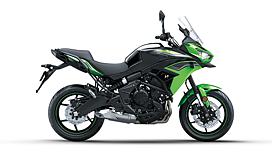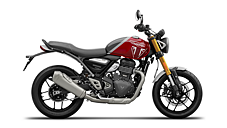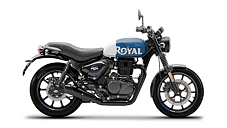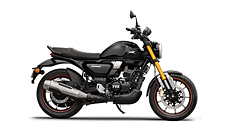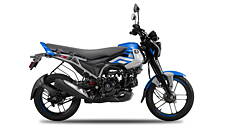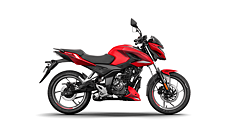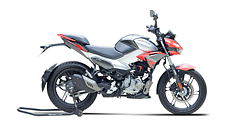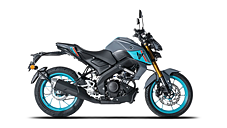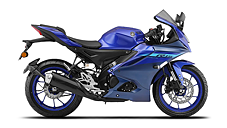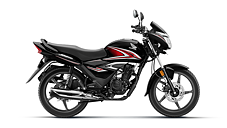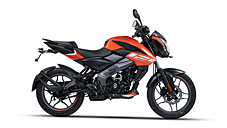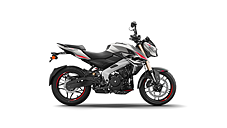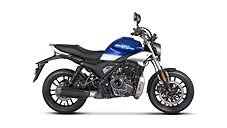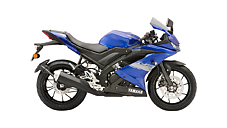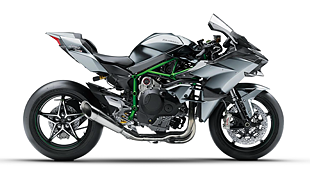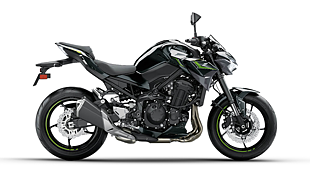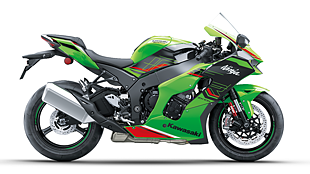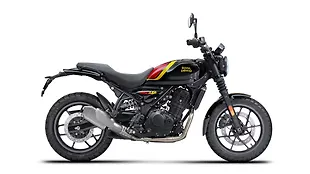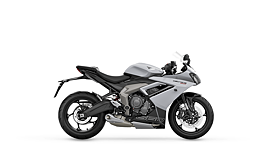Introduction

The 2022 Kawasaki Versys 650, which debuted at the EICMA motorcycle show in Italy last year, gets several styling and feature upgrades over its predecessor. However, underneath the revised styling is the tried and tested package that makes this middleweight sports-adventure tourer one of the best motorcycles in its segment. We tested the 2022 Kawasaki Versys 650 across a variety of riding situations and here we bring you its detailed road test review.
Styling and Quality

The previous styling update for Versys 650 came in 2015 when Kawasaki replaced the vertically-stacked, alien-like headlight assembly of the twin-pod setup. This 2022 model, in that sense, is an evolution instead of a revolution over the 2021 version. Thus, while the 2022 model continues to pack a twin-pod headlight, its Versys 1000-inspired design clearly distinguishes it from its predecessor.

Further, the revised front fascia is accompanied by a new windscreen setup with a relatively easier adjustment mechanism than its predecessor. While this lever-operated setup is nowhere close to the much more friendly mechanism on the Ducati Multistrada or the Triumph Tiger range, it still is more convenient than the screw-type design on the 2021 version.

The fairing, too, is revised for 2022 and the added panels on the sides provide the 2022 Versys 650 with an even more muscular look. Then, there are the new graphics and an additional colour theme. There’s also a new colour TFT display with Bluetooth connectivity that replaces the semi-digital console. It also gets more buttons on the handlebar to access various functions on the screen. But everything else is identical to the previous versions, and the 2022 model continues to pack a 21-litre fuel tank, single-piece step-up seat, two-piece pillion grab rail, underbelly exhaust, and 17-inch alloy wheels that are wrapped in road-biased tyres from the factory.

Now, several people, including some of my colleagues, found the Versys 1000-inspired design more appealing. To me, however, the sharper angle of the headlight and the relatively subtle design of the windscreen of the previous version still look more attractive. Nevertheless, this model has a commendable road presence and it will turn heads wherever it goes. The build quality is solid, and we found no irregular panel gaps, rattling sounds, or bad paint quality anywhere on the motorcycle.
Ergonomics and Comfort

The Versys range is designed to munch miles while delivering the utmost comfort levels. This motorcycle is no different, and the upright rider’s triangle and spacious saddle make the Versys 650 an absolute mile muncher. Now, unlike its 650cc siblings, the Versys 650 comes with Showa Separate Function Forks that are adjustable for rebound damping and preload. And the asymmetrically-mounted rear mono-shock comes with remote adjustment for preload only. Then, the upright rider’s triangle further aids the cause and improves comfort levels.

However, there is some scope for improvement. The windscreen, for example, does not provide complete windblast protection, at least for taller people. Even in the tallest setting, there was a noticeable amount of buffeting on the helmet. And the mechanism itself, as mentioned earlier, is not as friendly to adjust as some of its rivals. Moreover, the seat angle pushes you into the fuel tank every time you brake aggressively. In fact, the single-piece saddle, too, can get annoying while accessing the under-seat storage.
Performance and Handling

At the heart of the 2022 Versys 650 is the same tried-and-tested 649cc, parallel-twin, liquid-cooled engine that powered the previous iteration of the motorcycle. While it is the same engine that powers the Ninja 650, Z650, Z650RS, and the Vulcan 650, the Versys 650 gets a different state of tune. Linked to a six-speed gearbox, the parallel-twin engine makes a healthy 65.7bhp at 8,500rpm and 61Nm of peak torque at 7,000rpm.

The power delivery is linear and the Versys 650 will tread along anywhere above 3,000rpm. It really comes to life from 4,000rpm onward, with a noticeable step-up in acceleration post 6,000rpm. The speedometer will sit at 100kmph at just under 5,000rpm while 120kmph arrives just shy of 6,000rpm in the sixth gear. This leaves you with ample power in reserve for quick overtakes without having to downshift. The six-speed gearbox works well too, although the clutch isn’t the lightest and it can get tiring in bumper-to-bumper traffic situations.

Now, the braking setup has been retained from the 2021 version and the latest iteration of the Versys 650 continues to use twin 300mm rotors at the front and a single 250mm disc at the back – both featuring a petal-type layout and grabbed by Nissin-sourced calipers. Overall, the hardware packs a good bite and sheds speed at a commendable pace.

Despite its ADV-inspired styling, the Versys 650 is designed for the road. Thus, it comes with 17-inch alloy wheels that make the motorcycle an absolute treat on the tarmac. It feels sporty around corners and stable at high speeds. However, the wet grip from the stock tyres isn’t very confidence inspiring and we recommend getting something different as soon as the factory-installed set runs out. That said, although the 17-inch wheels, road-biased tyres, and a low ground clearance do not make the Versys 650 very friendly for off-roading, the tall handlebar and good standing ergonomics allow you to enjoy some amount of soft-roading.
Features and Technology

Talking about the features of this 2022 version, it gets all-LED lighting which brings the feature list at par with its rivals. Even the Bluetooth-enabled colour TFT display looks quite modern and is easy to read. Further, Kawasaki has improved the rider safety net with the addition of a two-level traction control system that can be completely turned off, if one desires. All of these features sound promising on paper. But do they work as well in real life?

The LED lighting, despite being slightly better than the older Versys 650, still feels inadequate. Then, the information-rich colour TFT display, despite its Bluetooth connectivity, misses crucial features like call alerts, music controls, and most importantly, onboard navigation. Going through the menu is quite a task too, and it takes time to get used to the setup.

The traction control system is a welcome change and it’s remarkably easy to adjust, even on the fly. However, to completely turn off the system, you will have to bring the motorcycle to a standstill. Lastly, the dual-channel ABS is always active and you cannot turn off the system at the rear in case you were planning to go trail riding.
Fuel Efficiency

The 2022 Versys 650 delivered a fuel economy similar to the previous model at 19.4kmpl. With its 21-litre fuel tank, it should cover approximately 400km on a full tank.
Should you buy it?

The Kawasaki Versys 650 is one of the best motorcycles in the middleweight segment of the Indian market. It has a road presence, enjoyable engine, and some really useful features. Further, despite the newer features and updated design, the 2022 Versys 650 is considerably more affordable than its rivals which makes it a very desirable option.

Sure, there are a few drawbacks like the inadequate windblast protection for tall riders or the insufficient headlight performance and lack of Bluetooth features, but these aren’t deal breakers and you can work your way around some of these issues with aftermarket accessories. So, if you’re looking for a sub-Rs 10 lakh (OTR) motorcycle, the Versys 650 should be among the top contenders on your list.
Photography by Kapil Angane
Gallery
1/171
Kawasaki Versys 650 Front View
Double Tap to Zoom











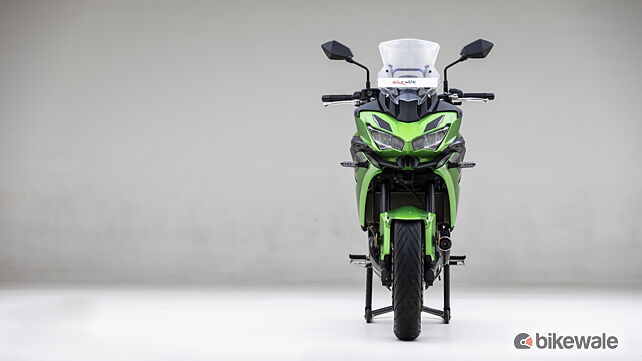







![[object Object] ThumbNail Images [object Object] ThumbNail Images](https://imgd.aeplcdn.com/642x361/n/cw/ec/129861/kawasaki-versys-650-pillion-footrest28.jpeg?isig=0&wm=2&q=80)
![[object Object] ThumbNail Images [object Object] ThumbNail Images](https://imgd.aeplcdn.com/642x361/n/cw/ec/129861/kawasaki-versys-650-right-side-body-panel-decal29.jpeg?isig=0&wm=2&q=80)
![[object Object] ThumbNail Images [object Object] ThumbNail Images](https://imgd.aeplcdn.com/642x361/n/cw/ec/129861/kawasaki-versys-650-grab-rail31.jpeg?isig=0&wm=2&q=80)
![[object Object] ThumbNail Images [object Object] ThumbNail Images](https://imgd.aeplcdn.com/642x361/n/cw/ec/129861/kawasaki-versys-650-grab-rail33.jpeg?isig=0&wm=2&q=80)
![[object Object] ThumbNail Images [object Object] ThumbNail Images](https://imgd.aeplcdn.com/642x361/n/cw/ec/129861/kawasaki-versys-650-tail-light34.jpeg?isig=0&wm=2&q=80)
